The Deephorizon/BP Oil Spill continues to spew water into the Gulf of Mexico. No true solution to the problem has been proposed until the relief wells are drilled in August (who knows if this will work when we get there either). The number one priority at the moment is stopping the flow of oil from the subsea level. This site is about doing this.
The original BP containment dome failed because of the formation of methane hydrates blocking the 12″ exit pipe and lifting the dome off the sea floor. With the water being only 30 ºF (-1 ºC) at the sea floor, why don’t we use this to stop the flow of oil? When not use the methane hydrates to our advantage and use them to freeze over the BOP? We don’t have the time or ability to wait for BP to attempt intercepting the 7 inch in diameter well bore with its two relief wells. We need more alternatives.
I propose freezing the ground and blow out preventer to stop the flow of the oil. Similar to the first top hat procedure, place a containment box with a large escape hole (30″) at the top to allow the oil to continue to flow out over the BOP. Inside the dome is an appropriately thick steel plate. The box is lowered over the blow out preventer. It is then filled with CO2 or liquid nitrogen that freezes at the ground and inside the containment box (CO2 should sink below water as it is more dense. See here). Creating the dry ice to freeze that the bottom of the containment dome could, I my theory, be created by expanding gaseous C02 to rapidly decrease the temperature and create dry ice. This freezing is continued until the ice forms a thick layer around the BOP, the ground, and inside the containment dome — effectively sealing the containment box to the ground and with the bottom of the BOP inside it (preventing the lift problem that resulted in the failure of the top hat procedure). The box continues to fill up with ice slowly closing in on the escaping oil. Once a substantial amount of ice is present in the box, the thick steel plate is lifted to cover the hole inside the top of the containment dome (use two thin silk threads around the top of the steel plate to form a fine fit between the top of the box and the steel plate. See how two half engine blocks are sealed together). This seals off the top of the containment box. (Alternatives include a plunger cone that raises into the top of the tapered top escape hole or a circular plate inside a cylindrical dome). Alternatively, methane hydrates crystals could be formed inside the BOP by injecting methane into it to assist the junk shot procedure.
Hopefully the growing amount of ice in of itself is capable of sealing off the oil. The riser that the oil is escaping from is only 21″ in diameter. As a precaution, I propose using an tapered base. On the upper side of the tapered base is a ridge. It has an escape hole that will be fitted with a new riser. The escape hole and adjacent ridge are heated to provide a point of least resistance. Then all the escaping oil will be safely transported to surface ships and no longer be spewing into the ocean.
Visit the Land Cleanup Demo page for an example of how dry ice is being used on the surface to assist with the cleanup. Also, check out the blog for more deep sea stats and numbers/ideas I’m working with. Thanks.
The BOP (the riser is only 21″ in diameter):
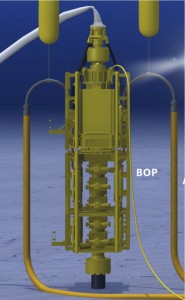
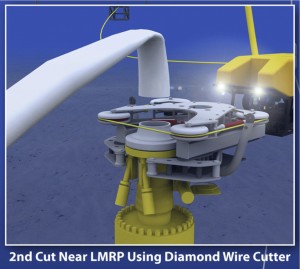
BP wants the rights to these images: © BP p.l.c.

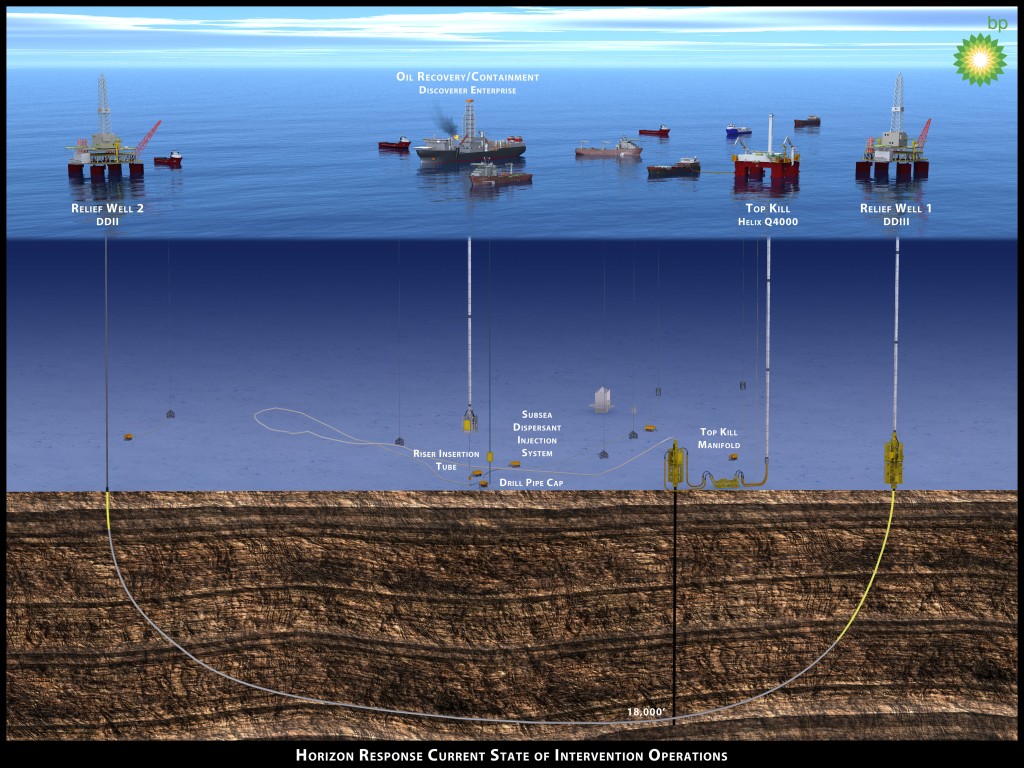
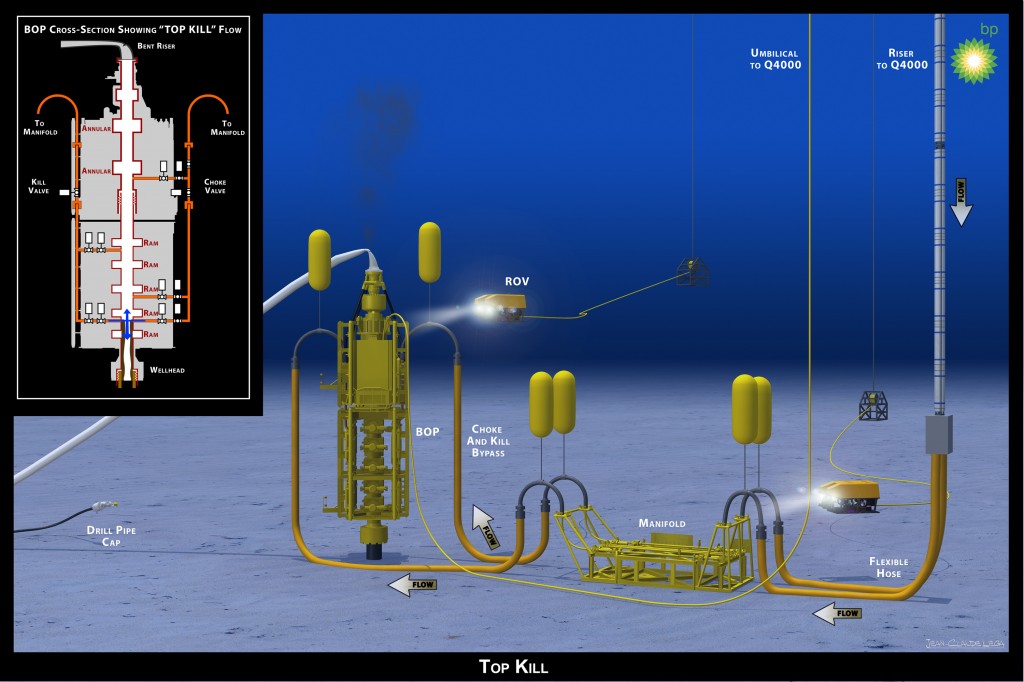
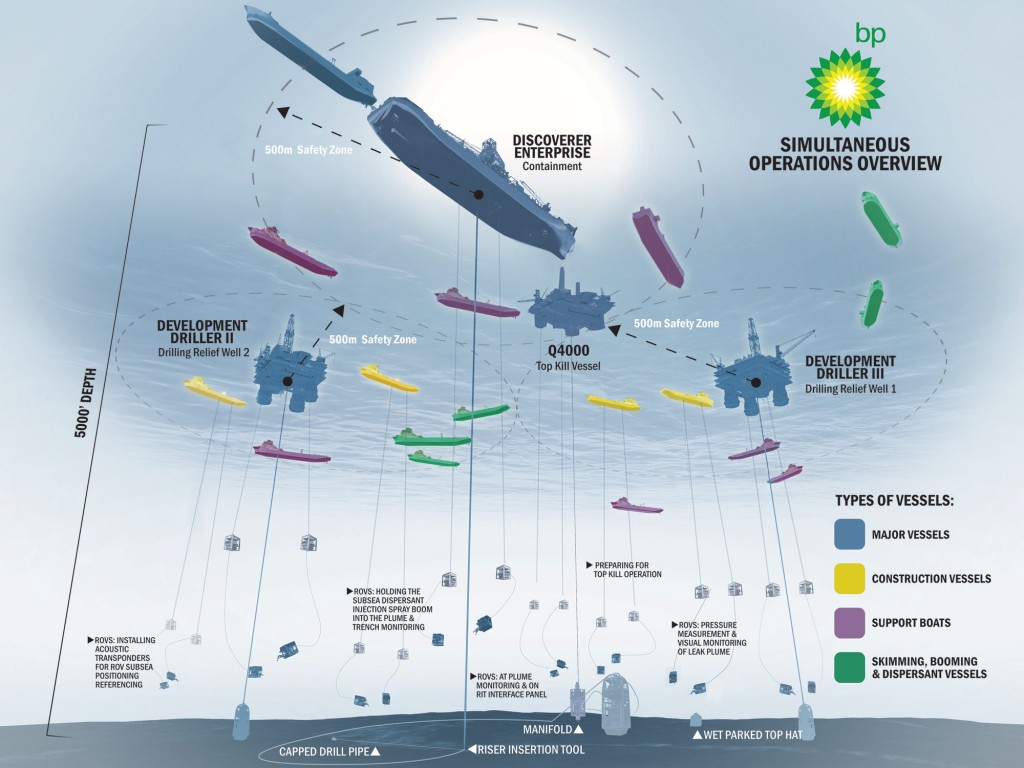
I was searching blogs for oil spill and read your blog. We have similar interests and was wondering if you would like to exchange links. If you are interested contact me at jordy@bailoutthegame.com
Hi Jordy,
Thanks for your interest in the freezeoil.com site. Definitely interested in exchanging links. Let me know if you have any new ideas.
Thanks,
Zach
zach@freezeoil.com